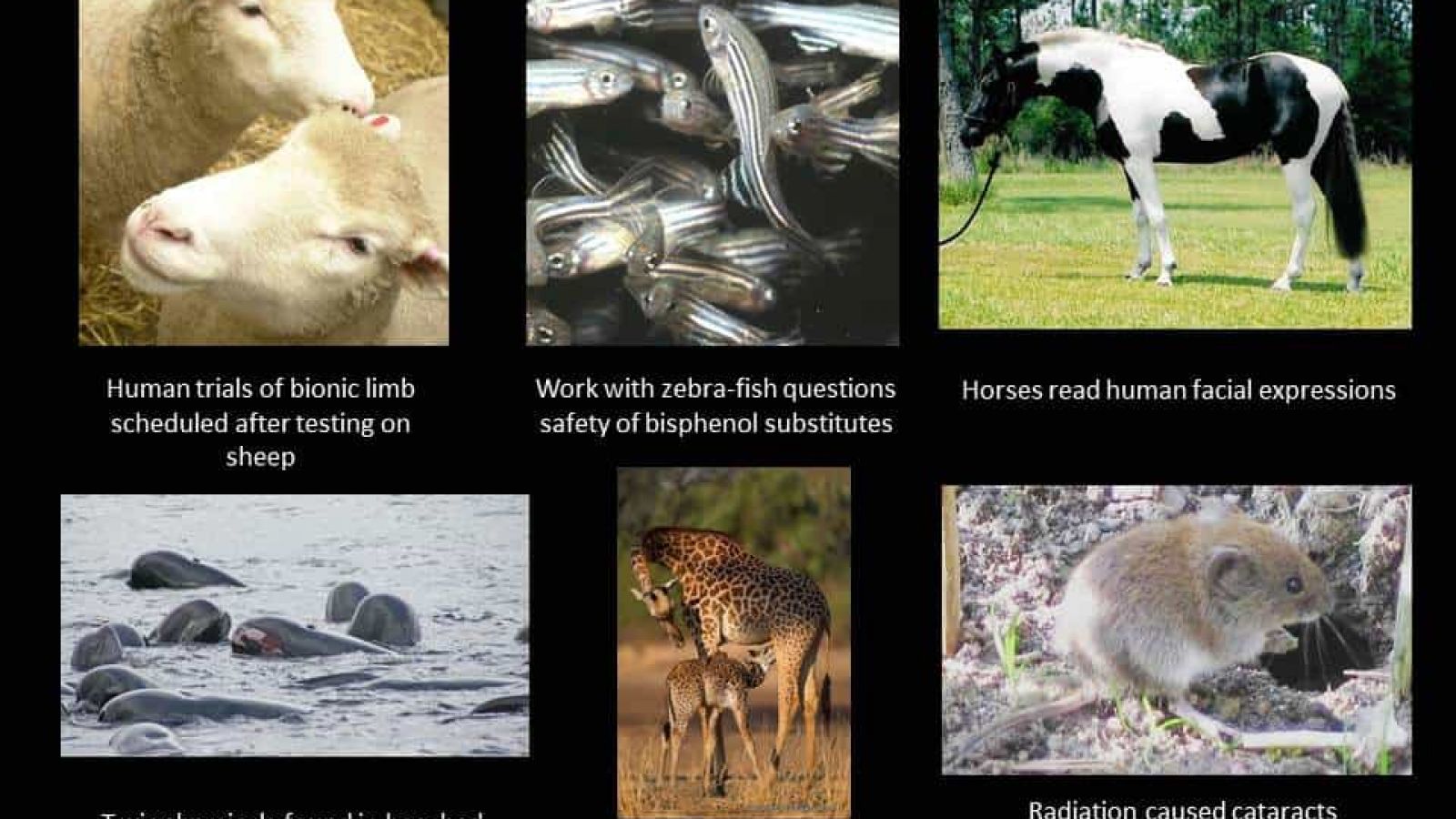 Work on zebrafish have raised questions about the safety of a common substitute for the controversial compound bisphenol A (BPA). BPA is used to make certain plastics and a number of countries have banned its use in food contact items such as baby bottles as it is a known endocrine disruptor. Accumulating research suggests that bisphenol S (BPS) – a preferred substitute for BPA – has a very similar toxicological profile to BPA, and may be no less harmful.
Work on zebrafish have raised questions about the safety of a common substitute for the controversial compound bisphenol A (BPA). BPA is used to make certain plastics and a number of countries have banned its use in food contact items such as baby bottles as it is a known endocrine disruptor. Accumulating research suggests that bisphenol S (BPS) – a preferred substitute for BPA – has a very similar toxicological profile to BPA, and may be no less harmful.
http://www.rsc.org/chemistryworld/2016/02/bisphenol-bpa-replacement-toxicology-studies
Legal tussle delays launch of huge toxicity database
Health risks of nearly 10,000 chemicals charted to help predict toxicity of untested substances.
http://www.nature.com/news/legal-tussle-delays-launch-of-huge-toxicity-database-1.19365
Mice with bear bacteria got fatter
The scientists transferred bacteria flora from bears in winter hibernation as well as bears in summer to lab mice that were cultivated to be germ-free.
It turned out that the mice which were given the summer flora of bacteria gained weight more readily. They also appeared to be safeguarded against some of the negative effects of obesity.
http://sciencenordic.com/why-bears-can-be-obese-and-healthy
Toxic chemicals found in beached whales in Fife
A pod of whales stranded in Fife had high concentrations of toxic chemicals, some of which had reached the mammals' brains, scientists have found.
The pod of long-finned pilot whales were stranded on a beach between Anstruther and Pittenweem on 2 September 2012.
Out of the 31 mammals which beached, only 10 could be refloated and 21 - 16 females and five males - died.
The tests were led by the University of Aberdeen and the Scottish Marine Animal Stranding Scheme.
Scientists found mercury at levels high enough to cause severe neurological damage in humans and demonstrated for the first time that the toxic element cadmium can cross the blood-brain barrier.
http://www.bbc.co.uk/news/uk-scotland-edinburgh-east-fife-35550927
Early humans NOT climate change were responsible for wiping out Australia's giant prehistoric animals
-
Australian scientist says humans caused megafauna extinction
-
Human hunting is believed to be to blame rather than climate change
-
One of the extinct animals was a giant 230 kilogram kangaroo
11/02/16
Baby giraffes steal milk
This behaviour makes up about 40 per cent of their suckling – the highest rate recorded in any non-domesticated mammal.
The scientists observed 24 nursing giraffes and 37 calves at four zoos in the Czech Republic. They saw 83 per cent of mothers nursing a calf other than their own, and 87 per cent of calves suckling from a female that wasn’t their mother (Animal Behaviour, doi.org/bcbw).
https://www.newscientist.com/article/2076766-baby-giraffes-steal-milk-and-adults-let-them-do-it/
Radiation causes cataracts in Chernobyl voles
30 years after Chernobyl the effects of chronic exposure to low radiation to wild animals remain largely unknown. New research suggests that chronic exposure to low radiation can cause damage to the eyes of wild animals.
Higher frequencies of cataracts were found in the lenses of bank voles which had lived in areas where background radiation levels were elevated compared to areas with natural radiation levels. Cataract frequency increased with age in the voles, similarly as in humans generally. In addition, the effects of aging intensified as a result of elevated radiation.
Lehmann P, Boratyński Z, Mappes T, Mousseau TA, Møller AP (2016) Fitness costs of increased cataract frequency and cumulative radiation dose in natural mammalian populations from Chernobyl. Scientific Reports, 6, 19974. DOI: 10.1038 / srep19974
What can wolf dialects say about human language?
A new study suggests that wolves – in fact canids from different species and locations – howl in different 'dialects,' a discovery that could aid in understanding how human language develops.
http://www.csmonitor.com/Science/2016/0209/What-can-wolf-dialects-say-about-human-language
10/02/16
Horses read human facial expressions
Horses can read human facial expressions, according to new research at the University of Sussex. The scientists showed images of happy or angry faces to 28 horses while monitoring their heart rate and which eye they used to assess the images. Horses use their left eye (controlled by the right hemisphere of their brain) to process negative stimuli - which they used when looking at angry faces.
http://www.bbc.co.uk/news/science-environment-35522233
Original Paper: http://rsbl.royalsocietypublishing.org/content/12/2/20150907
Explaining animal research in the newspaper
Read our letter to the Belfast Telegraph about the important role of animals in research, a portion of which is copied below:
While there is no universal "cure for cancer", as such, animal research has given us a huge number of treatments which have increased both the number of people getting the "all-clear" and the 10-year survival rate across a number of different cancers.
Thanks to research using rats and mice, the 10-year survival rate for women with breast cancer, for instance, has increased from 40% in 1980 to 75% today. This is not research that should be abandoned.
http://www.belfasttelegraph.co.uk/opinion/letters/animals-remain-a-key-research-tool-34434481.html
Studies in rats show running can help learning
Studies in rats have shown that aerobic exercise can improve the parts of the brain responsible for learning. Rats either had a genetic predisposition towards high response to aerobic training (HRT) or a low response to aerobic training (LRT). Long distance running helped the development of hippocampul neurons, particularly in those rats predisposed to it.
http://www.dailymail.co.uk/health/article-3439329/Running-not-good-body-gives-BRAIN-workout-boosting-capacity-learn.html
09/02/16
Wbp2 gene expression linked to progressive hearing loss in mice
Researchers at King's College London and the Wellcome Trust Sanger Institute have demonstrated that the loss of Wbp2 gene expression leads to progressive hearing loss in mice as well as in two clinical cases of children with deafness with no other obvious features. Progressive hearing loss is a very common disease however, very little is known about its molecular mechanisms therefore medical therapies have been lacking. Wbp2 was found to be involved in progressive hearing loss during a large-scale screen for hearing defects in newly-generated targeted mouse mutants. The finding of a new gene involved in human deafness following the initial discovery of its role in the mouse also emphasizes the value of mouse genetics research for better understanding human disease.
http://www.embo.org/news/research-news/research-news-2016/wbp2-is-a-novel-gene-implicated-in-deafness
Parasite that breeds in cats has potential to affect human behaviour
Toxoplasma gondii, a microscopic parasite that breeds in cats has been found to make chimpanzees less fearful of predators, prompting scientists to believe that the microbe can also affect human behaviour when it infects people. Previous studies have shown that when the feline parasite infects mice, the rodents lose their natural fear of cats and now the same behavioural changes appear in infected chimpanzees as they become more attracted to the smell of leopards, their main predators in the wild. These findings support the controversial view that T. gondii may influence the behaviour of infected people i.e. slowing down their reaction times or making them more likely to take risks due to cysts forming in the amygdala, the brain region involved in fear. Some studies have even linked the parasite with psychotic disturbances in humans such as self-harm, suicide, and schizophrenia.
http://www.independent.co.uk/news/science/toxoplasma-gondii-parasite-that-breeds-in-cats-could-affect-human-behaviour-when-it-infects-people-a6861221.html
Human trials with Australian designed bionic limb to begin next year after testing in sheep
Australian scientists from the Royal Melbourne hospital, the University of Melbourne and the Florey Institute of Neuroscience and Mental Health have designed a "bionic spine", a tiny 3cm long device that will enable paralysed patients to walk again by allowing them to control bionic limbs with the power of subconscious thought. The device has only been tested in sheep but human trials will begin next year in three patients at the Royal Melbourne hospital. Previous devices designed to allow paraplegics to control the movement of their exoskeleton limbs using only thought have required invasive surgery, involving removing a piece of the skull which carries a risk of infection and other complications. However, the bionic spine is minimally invasive and less cumbersome than previously developed devices.
https://www.theguardian.com/science/2016/feb/08/bionic-spine-could-enable-paralysed-patients-to-walk-using-subconscious-thought
Last edited: 7 April 2022 14:58




